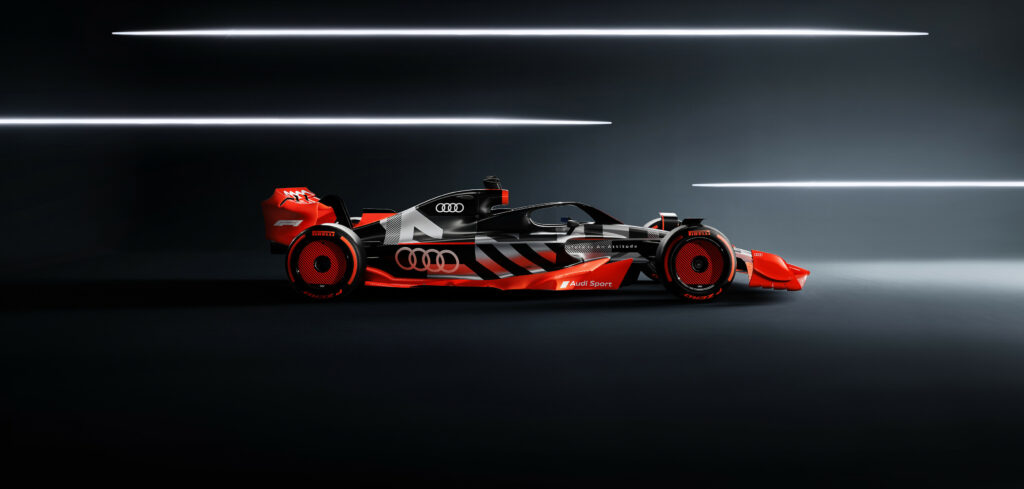Audi outlined further details of its 2026 F1 project at Auto Shanghai earlier this week. “Motorsport is an integral part of our DNA,” said Markus Duesmann, chairman of the board of management of Audi. “We are convinced that our Formula 1 commitment will strengthen Audi’s sporting focus.”
Oliver Hoffmann, member of the board of management for technical development at Audi, said, “The Audi Formula 1 project has really taken off in recent months. In the ongoing concept phase of the power unit, the foundation of our drivetrain for 2026 is being laid today. We attach great importance to detail work, for example on materials or manufacturing technologies, and we also focus on topics such as the energy management of the hybrid drivetrain. After all, efficiency is a key success factor for Formula 1 and the mobility of the future, these approaches will advance both worlds.”
A single-cylinder engine has been tested since the end of 2022, and Audi says the first full hybrid drivetrain unit, consisting of the combustion engine, electric motor, battery and electronic control unit, is scheduled to run on the test bench before the end of this year. On top of that, the company says that its dynamic development simulator in Neuburg will be brought up to Formula 1 standards and will further advance the development of the Audi power unit.
Further work at the Neuburg factory, under the umbrella of the specially founded Audi Formula Racing, is in full swing. More than 260 specialists have already been hired, with the core of the development team consisting of experienced Audi Sport and Audi employees with many years of experience in electric motorsport. They are joined by specialists with F1 expertise who have been sourced externally and will strengthen the team in a targeted manner. By the end of the year, the hiring of staff should be completed, and the team will consist of more than 300 employees.
Audi’s Competence Center Motorsport in Neuburg is also being expanded for the F1 project. From the second half of the year, additional test rigs for power unit development will be installed in a new building with a floor area of around 3,000m2. A modular design will enable the test rigs to be put into operation even before the building is fully completed in early 2024.



